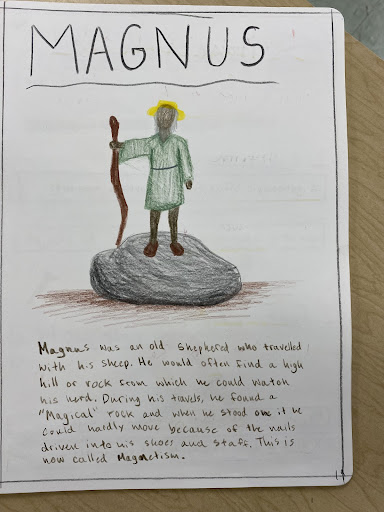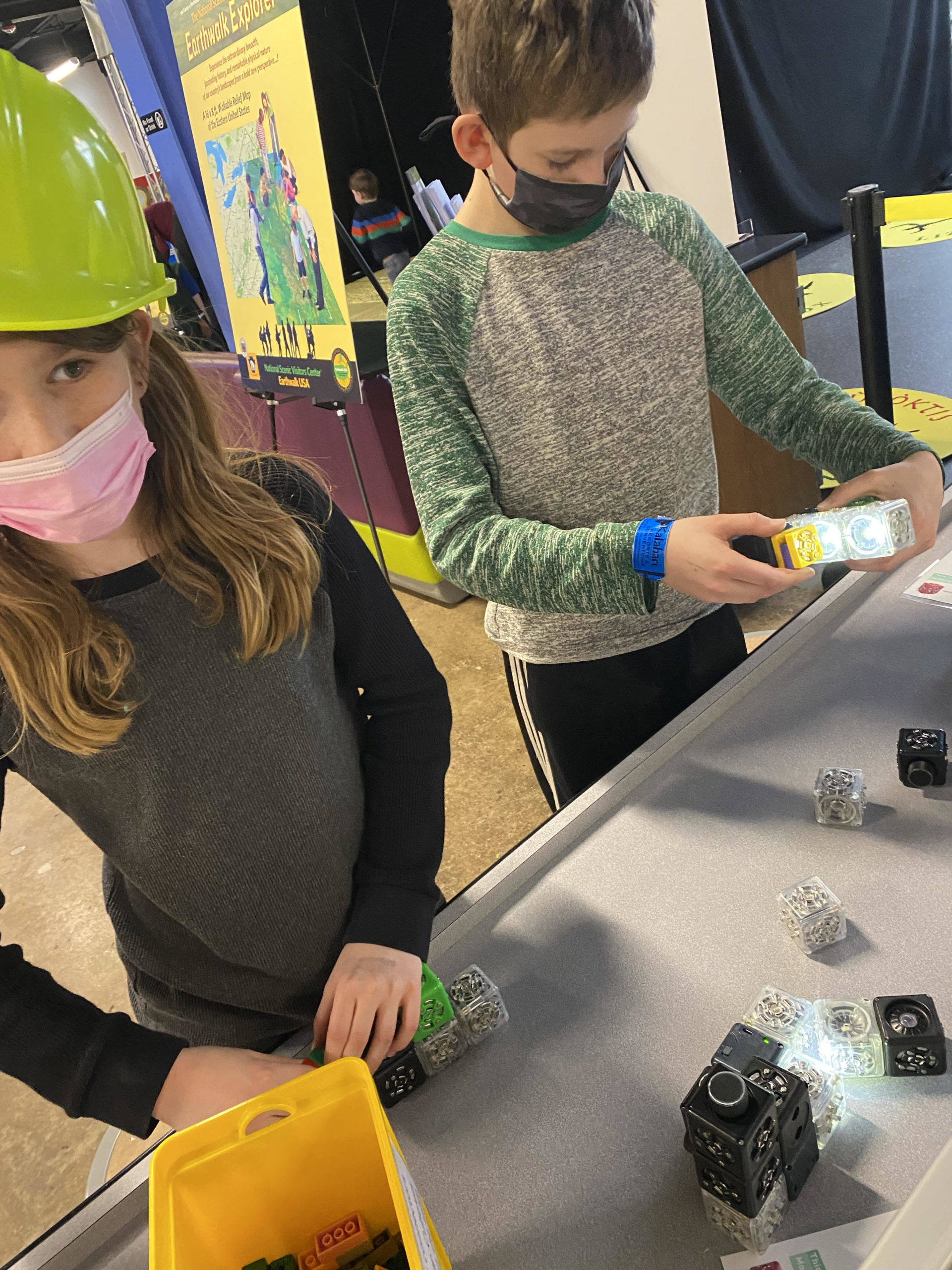Written by 6th grade teacher, Rochelle Dietz.
In 6th Grade, Physics is brought/taught through observation (observing phenomena) and hands-on experiences/experiments. Just as we’ve approached all of our learning, the goal is to cultivate an attitude of awe, so that they may truly see and experience the marvels around us. This is not done through what some Waldorf educators call “edu-tainment”, but through observing phenomena (a phenomenological approach). Over the course of a 4-week block of study, 6th graders explored the sources of Sound, Light, Heat, Magnetism and Electricity.
With the exploration of sound, we learned about the larynx. According to Rudolf Steiner you can “bring acoustics into relation with musical science when you describe the human larynx physically and physiologically” (as cited in Trostli, 2016) After this description, we compared human sounds with other types of sounds. We explored how sounds are created , pitch and volume and how sound travels.

This exploration of sound ended with a very exciting demonstration, sort of a mystery called the Chladni plate, where the students could “see” the effects of sound that are made visible through the changing geometric forms engendered by sounds.

The study of light was up next and we started with the experience of complete darkness, which happened on our stage. With all the curtains closed around us and every patch where light could possibly enter covered with cloth, the students sat in a circle and the lights were turned off. Once they sat in this darkness for some time, a small candle was lit and the flame observed and experienced. A reflection on their experience came later through beautiful poetry and illustrations.
 (Poem by Bija Nicarry, age 12, shared with permission)
(Poem by Bija Nicarry, age 12, shared with permission)
An exploration of light and darkness followed and much of our time was dedicated to the experience and study of color, which included the generation of color, afterimages and colored shadows.
Exploring the colors of light was definitely illuminating as they discovered the primary colors of light are different!

The study of heat was next and we focused on the warmth of colors, of sounds and of materials. We also explored how heat originates through combustion, light, friction, internal stress and electricity. Concluding our time with how heat travels through conduction, convection and radiation.

Up next was the story of the discovery of magnetism, which took us back to Ancient Greece and a shepherd named, Magnus. Magnus tried to sturdy his walk by placing nails into his shoes and his staff and found himself a high rock from which he could watch his sheep. Little did he know that he was standing on a “magical” rock. He could hardly move when he tried. From our studies in Geology, the students knew that this rock was indeed magnetite and that Magnus had discovered magnetism.

The students explored magnetism through various stations where they could discover the attractive power of magnets, how magnetic poles attract each other, that magnetism can travel through many materials and how a field of force penetrates and surrounds a magnet.
We concluded our introduction to 6th grade Physics with the study of static electricity. Here again we started with a story, that of a Greek scientist named Thales. He noticed that when amber was rubbed with a wool cloth, light objects were attracted to it. Electricity is named for the Greek word for amber, which is electron. The students enjoyed exploring how static electricity is produced by rubbing certain substances with other substances, that a static electric charge has the power to attract or repulse, similar to magnets and that static electricity can be detected and stored.

Our culminating demonstration was creating a Leyden Jar, where each of the 6th graders got to experience how a small charge would jump to the nail in the Leyden jar and then how a shock could be felt from the stored electricity!
Last but not least, we visited the Lancaster Science Factory to bring it all together.



Trostli, R., & Trostli, R. (2016). Physics the Waldorf way, grades 6-8: A Manual for Teachers. Lystra Books & Literary Services.
